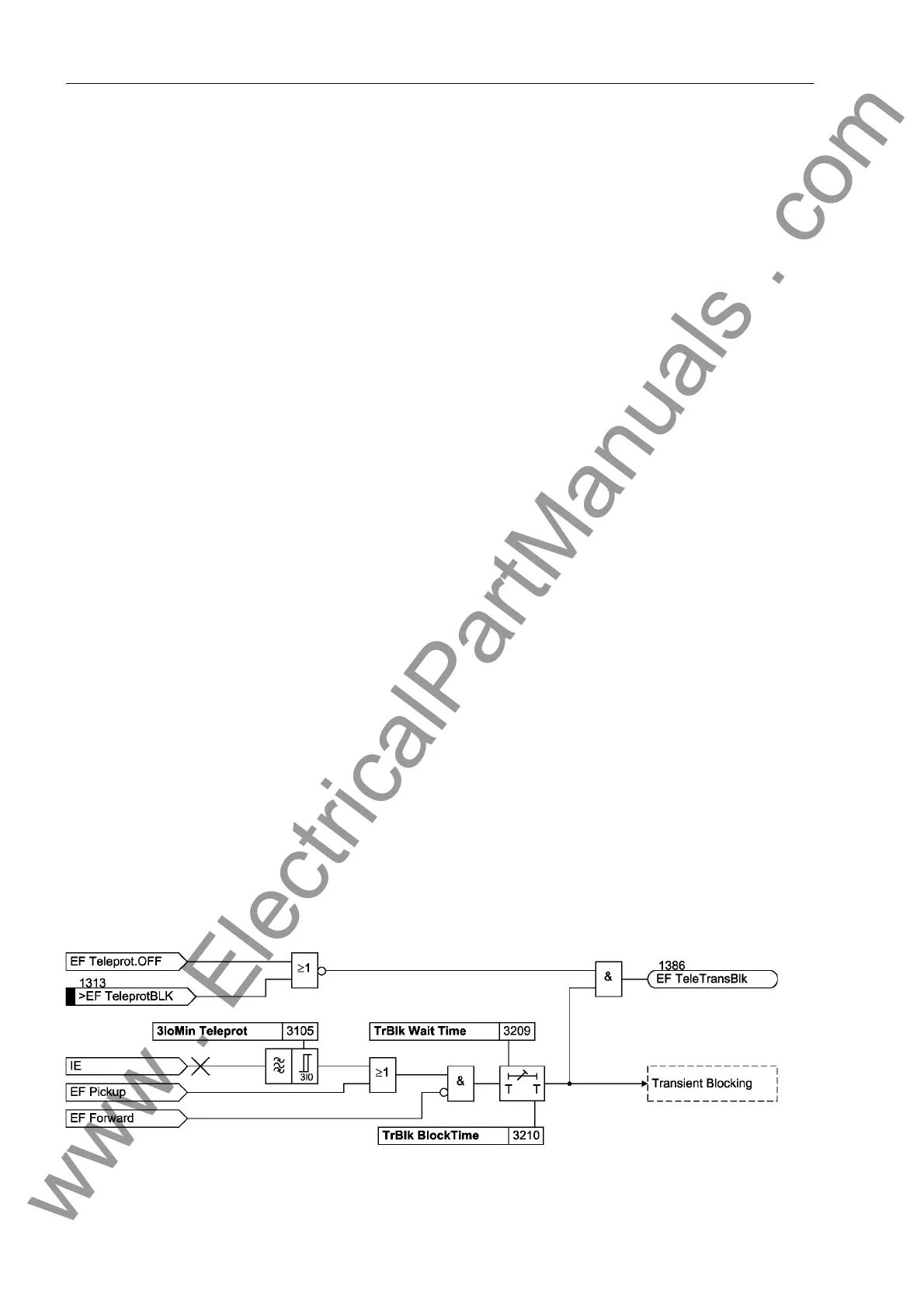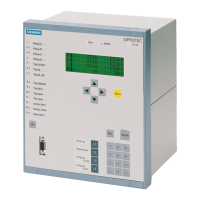2 Functions
242
7SD5 Manual
C53000-G1176-C169-1
As soon as the distance protection has detected a fault in the reverse direction, a
blocking signal is transmitted (e.g. „EF Tele SEND“, FNo 1384). The transmitted
signal may be prolonged by setting address 3203 accordingly. The blocking signal is
stopped if a fault is detected in the forward direction (e.g. „EF Tele BL STOP“, FNo
1389). Very rapid blocking is possible by transmitting also the output signal of the jump
detector for measured values. To do so, the output„EF Tele BL Jump“ (No 1390)
must also be allocated to the transmitter output relay. As this jump signal appears at
every measured value jump, it should only be used if the transmission channel can be
relied upon to respond promptly to the disappearance of the transmitted signal.
The occurrence of erroneous signals resulting from transients during clearance of ex-
ternal faults or from direction reversal resulting during the clearance of faults on par-
allel lines, is neutralized by the „Transient Blocking“. It prolongs the blocking signal by
the transient blocking time TrBlk BlockTime (address 3210), if it has been present
for the minimum duration equal to the waiting time TrBlk Wait Time (address
3209).
It lies in the nature of the blocking scheme that single end fed short-circuits can also
be tripped rapidly without any special measures, as the non-feeding end cannot gen-
erate a blocking signal.
2.9.5 Transient Blocking
Transient blocking provides additional security against erroneous signals due to tran-
sients caused by clearance of an external fault or by fault direction reversal during
clearance of a fault on a parallel line.
The principle of transient blocking scheme is that following the incidence of an external
fault, the formation of a release signal is prevented for a certain (settable) time. In the
case of permissive schemes, this is achieved by blocking of the transmit and receive
circuit.
Figure 2-107 shows the principle of the transient blocking for a directional comparison
and directional unblocking scheme.
If, following fault detection, a non-directional fault or a fault in the reverse direction is
determined within the waiting time TrBlk Wait Time (address 3209), the transmit
circuit and the trip release are prevented. This blocking is maintained for the duration
of the transient blocking time TrBlk BlockTime (address 3210) also after the reset
of the blocking criterion.
In the case of the blocking scheme, the transient blocking prolongs the received block-
ing signal as shown in the logic diagram Figure 2-106.
Figure 2-107 Transient blocking for a directional comparison and directional unblocking schemes
www . ElectricalPartManuals . com

